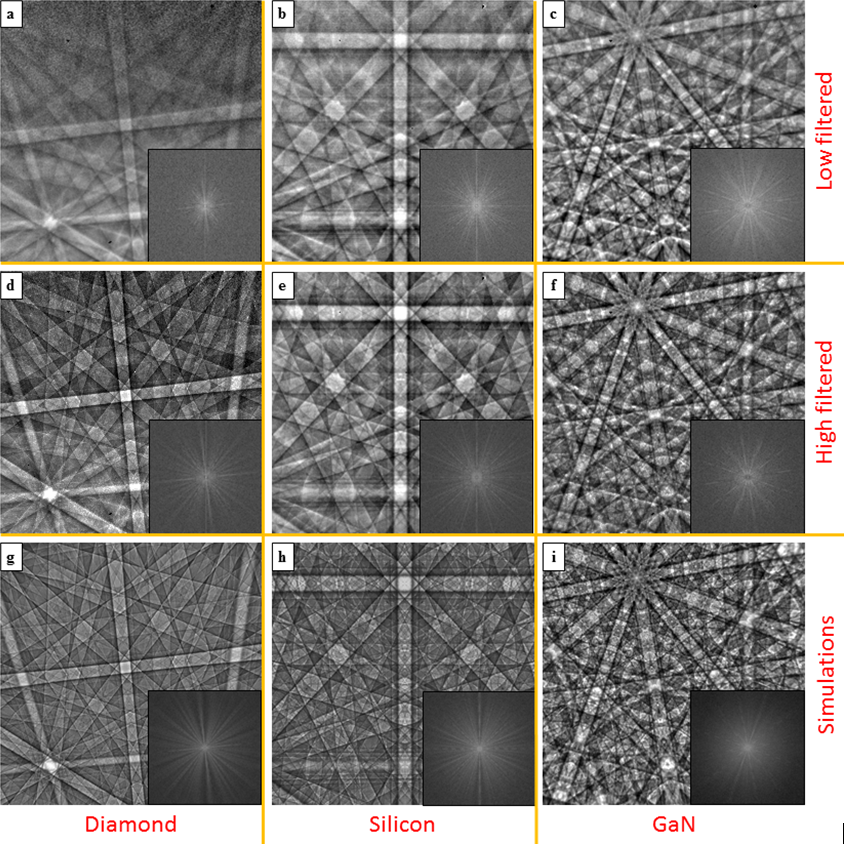Our EBSD research at Strathclyde is mainly focused on the development of new direct electron detectors [23]. We are using the Timepix and Medipix detectors [24, 25], which belongs to the CMOS hybrid pixel detectors family. It is one of the outcomes of an international collaboration (Medipix) hosted at CERN, established to provide a solution for a range of problems in X-ray and gamma-ray imaging in hostile conditions. Using the Timepix allows digital direct electron detection and energy filtering; it enables EBSPs to be acquired with reduced noise and increased contrast, and an unprecedented increase in detail is observed in the patterns (see Figure 1).

Figure 1: Experimental and simulated EBSPs from diamond (a, d, g), Si (b, e, h) and GaN (c, f, i) for an incident beam energy of 20 keV and a probe current of ~10 nA. (a-c) were acquired with a high pass energy filter of 4.6 keV, (d-f) were acquired with a high pass energy filter of 19.4 keV, and (g-i) are dynamical simulations. The insets are 2D fast Fourier transforms of each image.
